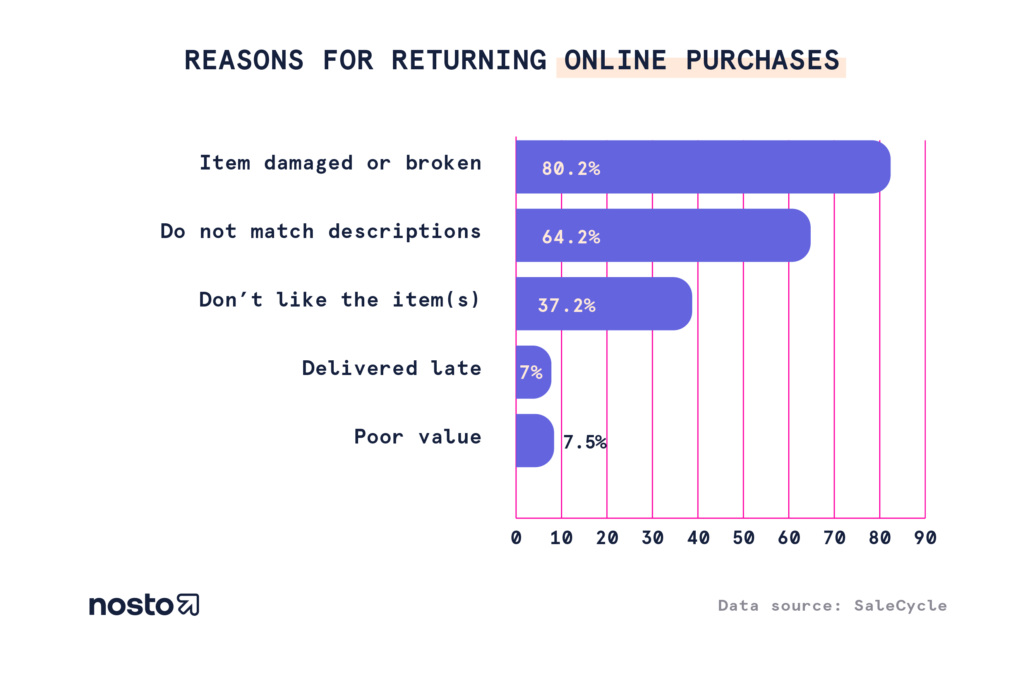
How to Reduce E-commerce Product
Return Rates?

Unique International Brands Operation Experience
How to Reduce E-commerce Product Return Rates?

One of the biggest challenges e-commerce businesses worldwide face is lowering product return rate. Not only do returns incur inconvenient hidden costs, but it often takes retailers some time before noticing that they’re losing a significant amount of profit due to product return. Check out some of the main factors an e-commerce seller has to consider when dealing with product returns, what causes a customer to send something back and best practices to turn potential returns into revenue opportunities.

Most Frequently Returned E–commerce Products in 2020
In global, 21% of product returns were clothing items, followed by:
- Shoes (12%)
- Consumer electronics (8%)
- Bags and accessories (6%)
- Books, music, movies and games (5%)
- Cosmetics and body care (5%)
Although it is not possible to eliminate product return as part of e-commerce, sellers can be more prepared by following the trends and analyzing statistics fresh from the market.
Here are some useful tips to help online sellers understand what triggers a product return and how to create a site experience that lowers the risk of increasing e-commerce return rate and satisfy more online shoppers:
1. Optimize Product Visuals
High-quality photography can help bridge the gap between product reality and customer expectations. Photos should display multiple product angles, allow 360-degree views, offer a zoom feature, show lifestyle images, and, when appropriate, play product videos. Images for all product color options and other variations should also be provided. Along with professional photography, consider embedding an Instagram gallery onto your site. This element will seamlessly show your products being worn or used by a wider variety of consumers.
2. Describe Products in Detail
Customers can’t touch or feel online products, so written product descriptions matter. A well-written one will allow the customer to virtually experience the product through all five senses, as well as present all applicable product details—such as materials used, special care instructions, and other reasons why your product is unique.
- Provide Accurate Sizing Information
Returns due to poor fit are an inherent problem in fashion e-commerce. Because customers can’t try on apparel before ordering, it is very important to calculate sizes accurately and consistently, along with providing measurements and brand-specific size charts on your site. Some companies now offer calculators that allow customers to type in their height and weight for best size suggestions; AI fitting assistants are another increasingly common option. By providing enough pre-purchase sizing information, a customer can confidently order a single size that will fit well—instead of ordering multiple different sizes and styles, then returning all but the ones they like best (In the luxury space, 51% of shoppers do this, a practice known as “bracketing.”).
- Collect Customer Feedback
Gather information about why customers are returning your products on return forms. Read online reviews. By taking the time to understand what is prompting returns, you can then address those issues by taking appropriate action: add more product views, write improved descriptions, correct size discrepancies, etc.
- Check Orders for Accuracy
Placing internal measures to ensure the correct items are being shipped out initially is well worth the time investment. This will ultimately prevent lost sales, negative customer experiences, extra shipping costs, liquidated products, and time spent processing returns and exchanges. This is also the right time to confirm that all items are shipped in packaging to prevent potential damage.
- Establish Generous Return Policies
Establish generous return policies. While this may seem counter-intuitive, return rates actually decrease when there’s no urgency to return a product. This may be related to customers growing attached to these items that they keep around longer. Zappos is a good example of a brand that has successfully embraced this model by offering a 365-day return policy.
It’s no secret that hassle-free returns and exchanges encourage consumers to buy from certain brands and improve the overall customer experience. 95% of customers will shop at a store again that offers easy returns.
Unlock the full power of UPFOS and reach your business goals faster.
Get strategic and technical guidance from UPFOS experts.
Products and Services
Quick Link
©2022 UPFOS All rights reserved.



